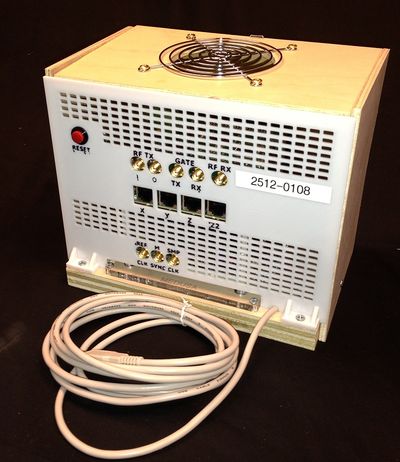Difference between revisions of "Hardware:Console"
Jump to navigation
Jump to search
m |
|||
| Line 1: | Line 1: | ||
== Console Part 1 == | == Console Part 1 == | ||
| − | The console interfaces with the computer via MATLAB. It produces the RF transmit pulses and gradient waveforms based on vectors created in a MATLAB sequence. It also acquires the received MRI signal at a time specified in the sequence. The console samples the received signal and downconverts it to baseband. Some specifics are at: http://mrsrl.stanford.edu/~medusa/hardware/ | + | The console is the "Medusa" console developed by the Stanford EE department (by Grieg Scott and Pascal Stang). The console interfaces with the computer via MATLAB. It produces the RF transmit pulses and gradient waveforms based on vectors created in a MATLAB sequence. It also acquires the received MRI signal at a time specified in the sequence. The console samples the received signal and downconverts it to baseband. Some specifics are at: http://mrsrl.stanford.edu/~medusa/hardware/ |
The console is also described in detail in [https://gate.nmr.mgh.harvard.edu/wiki/Tabletop_MRI/images/c/c0/Medusa.pdf this journal article]. | The console is also described in detail in [https://gate.nmr.mgh.harvard.edu/wiki/Tabletop_MRI/images/c/c0/Medusa.pdf this journal article]. | ||
Revision as of 16:22, 21 August 2013
Console Part 1
The console is the "Medusa" console developed by the Stanford EE department (by Grieg Scott and Pascal Stang). The console interfaces with the computer via MATLAB. It produces the RF transmit pulses and gradient waveforms based on vectors created in a MATLAB sequence. It also acquires the received MRI signal at a time specified in the sequence. The console samples the received signal and downconverts it to baseband. Some specifics are at: http://mrsrl.stanford.edu/~medusa/hardware/
The console is also described in detail in this journal article.
